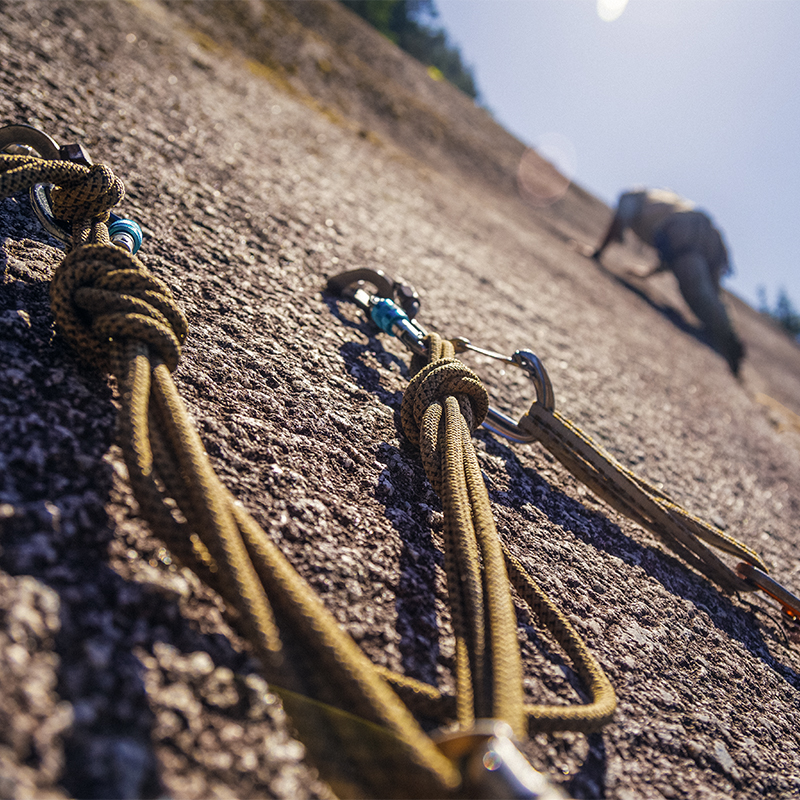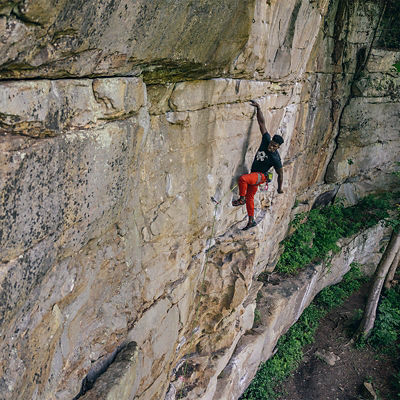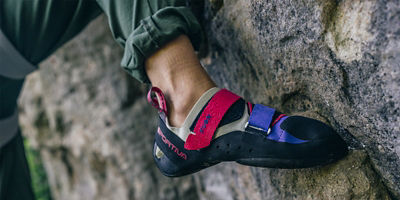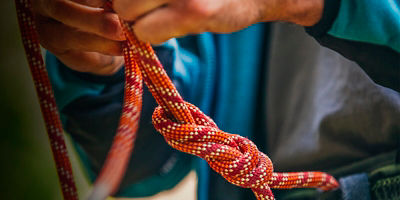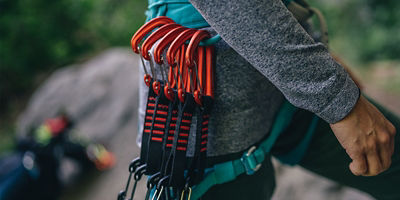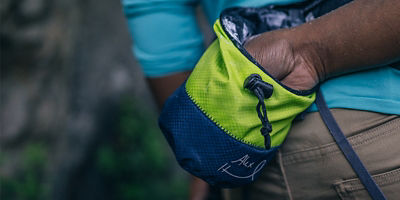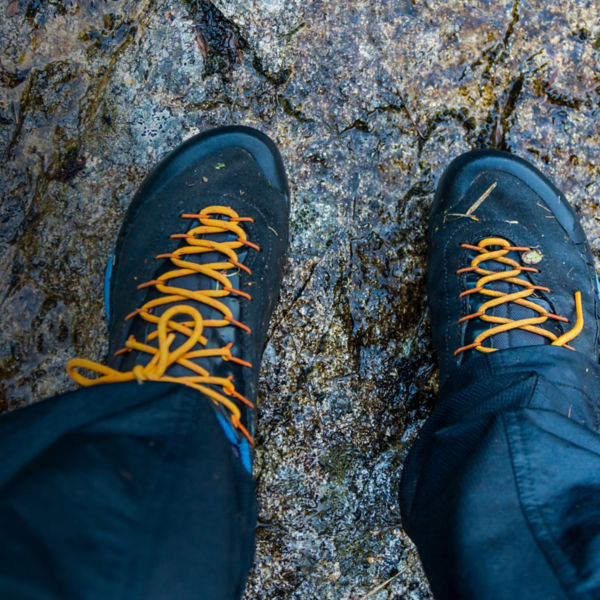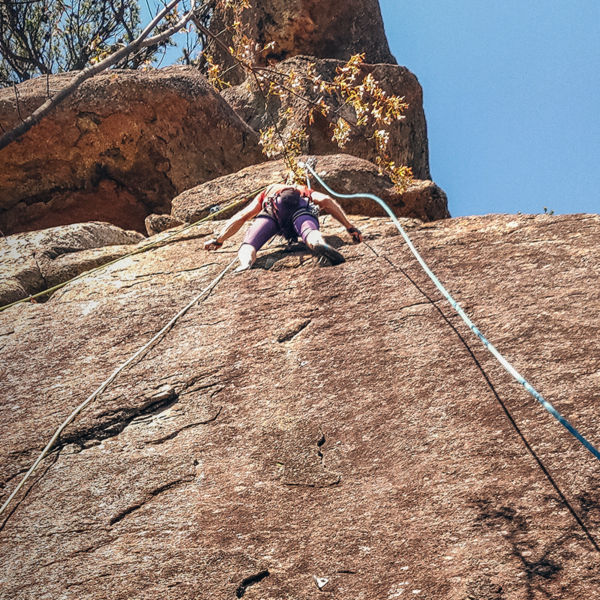How to Escape the Belay
1. Double-check your anchor (or build one).
If you’re belaying from a multipitch anchor, double-check that you’re securely clipped to the masterpoint with a locking carabiner and that each piece is solid. If necessary, adjust the anchor or add gear to ensure it can take load in the direction of your climber—from above if your leader has fallen, and from below if your follower has fallen.
If you’re belaying from the ground and don’t have an anchor, build one with whatever you have available. Remember you can use the tail end of the rope to sling a tree or boulder if you don’t have other material on hand.
2. Tie off your belay device to go hands-free.
Without letting go of the brake strand, push a bight of it through the back side of your belay carabiner. Pull it through the carabiner toward you until you have about a two-foot loop. Use the taut side of that loop to tie a mule hitch on the climber’s side of the rope. Now take the new loop of rope that you’ve pulled through your mule hitch and use it to tie an overhand knot on the climber’s strand, just above your belay device. The overhand is your backup knot, and it will hold the mule in place. (This classic knot combo is called a “mule overhand.”)
If you’re using an assisted braking device like a Gri-Gri, you can also tie a big overhand on a bight below your belay device. Just be sure to clip a carabiner through the loop to make sure it doesn’t work itself loose.
3. Friction-hitch the cordelette to the climber’s strand.
Now that you’re hands-free, grab your cordelette. Use one end to tie a klemheist hitch to the climber’s strand of the rope. (A Prusik hitch will also work—it will just take longer to tie and untie.)
4. Tie off your cordelette at the anchor.
When your friction hitch is done, clip a locking carabiner to the masterpoint of your anchor. Clip the slack side of your cordelette through that carabiner and tie a Münter hitch. Be sure to lock the carabiner. Tug at the strand behind the Münter to pull your cordelette taut, and tie your Münter in place with another mule-overhand. (This set of three knots is very common in rescue scenarios. It’s called a “Münter mule overhand.”)
5. Tie a safety knot in your belay strand.
Now you need to secure your belay strand. The most versatile knot you can use for this is—you guessed it—another Münter mule overhand. Grab the brake strand just behind your belay device and tie it to the masterpoint of your anchor with a Münter hitch on a locking carabiner. Lock the carabiner, but don’t tie the mule-overhand just yet.
6. Transfer the load to your friction hitch.
Keeping one hand on the brake strand behind your working Münter hitch, untie your original Münter-mule overhand—the knot that’s currently keeping your belay device locked. When this is done, you’ll have a lot of slack in the system. Tug the brake strand behind your working Münter hitch to pull most of the slack through the hitch. When you only have a shallow belly of slack in the rope, gently feed it through your device, effectively lowering the climber’s weight onto your klemheist hitch.
7. Remove your belay device from the system.
When the load is fully transferred to the klemheist, you’ll see the rope go slack just above your belay device. You can now remove your belay device from the system. You should still be holding the brake strand behind your working Münter hitch. Remember not to let go of the brake strand during this step.
8. Tie off your climber to escape the belay.
When you’ve removed your belay device, pull the brake strand to suck the rest of the slack through your working Münter hitch. When your brake strand is taut, give the climber’s strand a quick tug to flip the Münter hitch through the carabiner, which sets the hitch in a lowering orientation (this will be useful when you’re getting your partner to the ground later). This fip will create a tiny bit more slack in the climber’s strand. Push this slack back through the Münter hitch without flipping it out of its lowering orientation. Then, tie the Münter in place with a mule-overhand. You have successfully escaped the belay.




